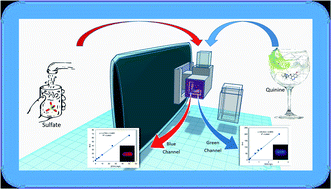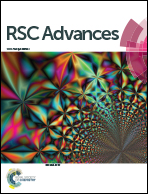New, inexpensive and simple 3D printable device for nephelometric and fluorimetric determination based on smartphone sensing †
Abstract
A new, inexpensive and easy to use 3D printable device was developed for nephelometric and fluorimetric determination. Its applicability was tested for the quantification of quinine in tonic drinks and sulfate in natural water with good analytical accuracy. In this way, sulfate determination was carried out by nephelometry using a red LED, while quinine was determined using a blue LED by fluorimetry. A smartphone camera was used to take the pictures and afterwards transform them into the RGB color space using the software ImageJ by a personal computer. The linear range was 2.0–50.0 mg L−1 for sulfate with a LOD of 0.13 mg L−1, and the corresponding quantification limit (LOQ) was 0.43 mg L−1. The linear range for quinine was from 0.42 to 3.10 mg L−1. The LOD and LOQ were 0.11 mg L−1 and 0.38 mg L−1, respectively.

- This article is part of the themed collections: ENQA - 20th Brazilian Meeting on Analytical Chemistry and 2020 RSC Advances HOT Article Collection


 Please wait while we load your content...
Please wait while we load your content...